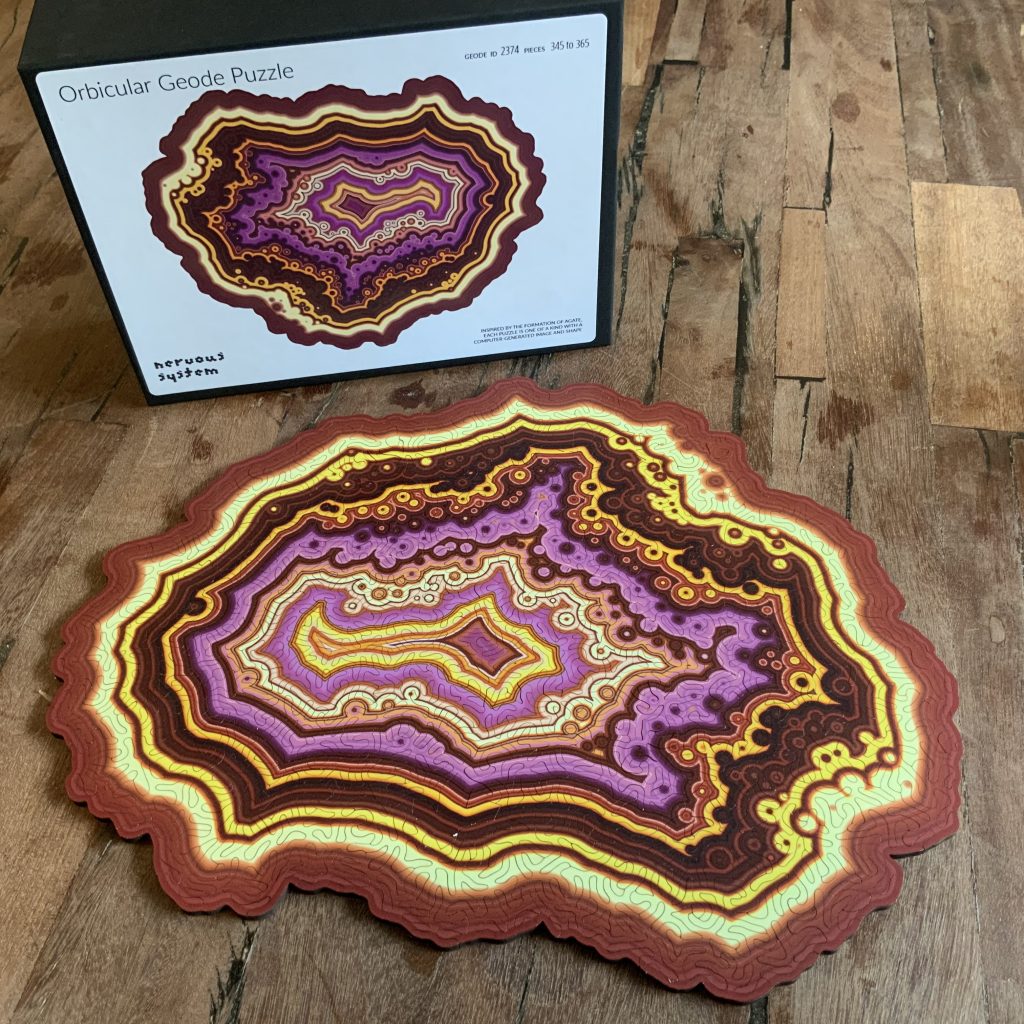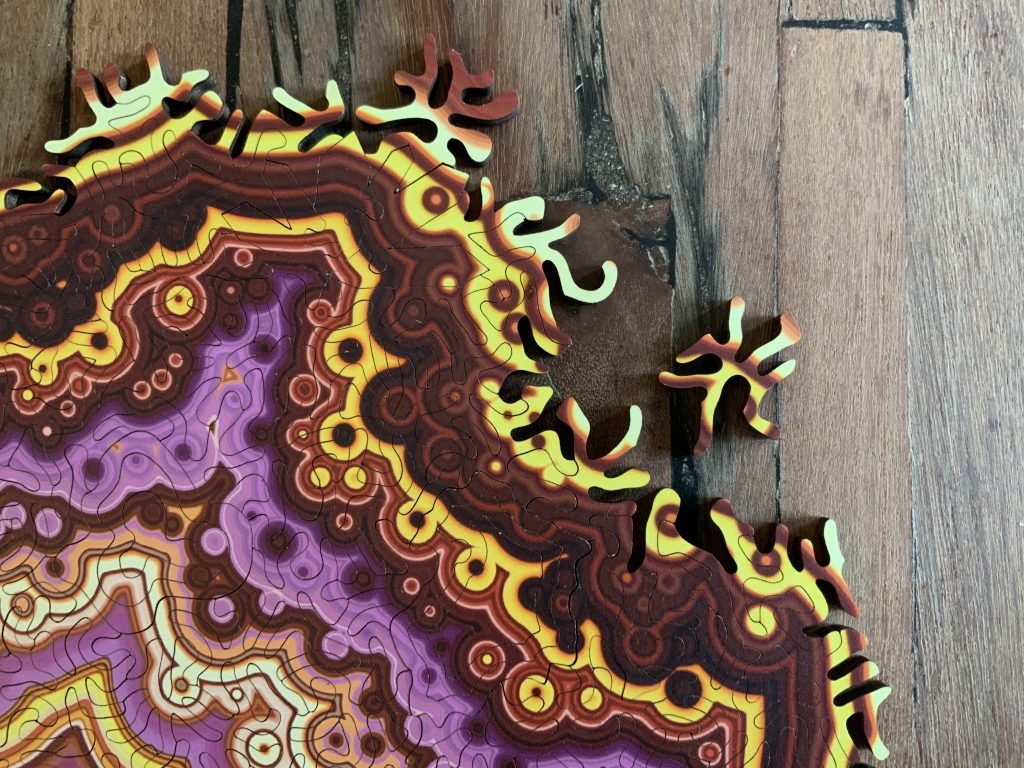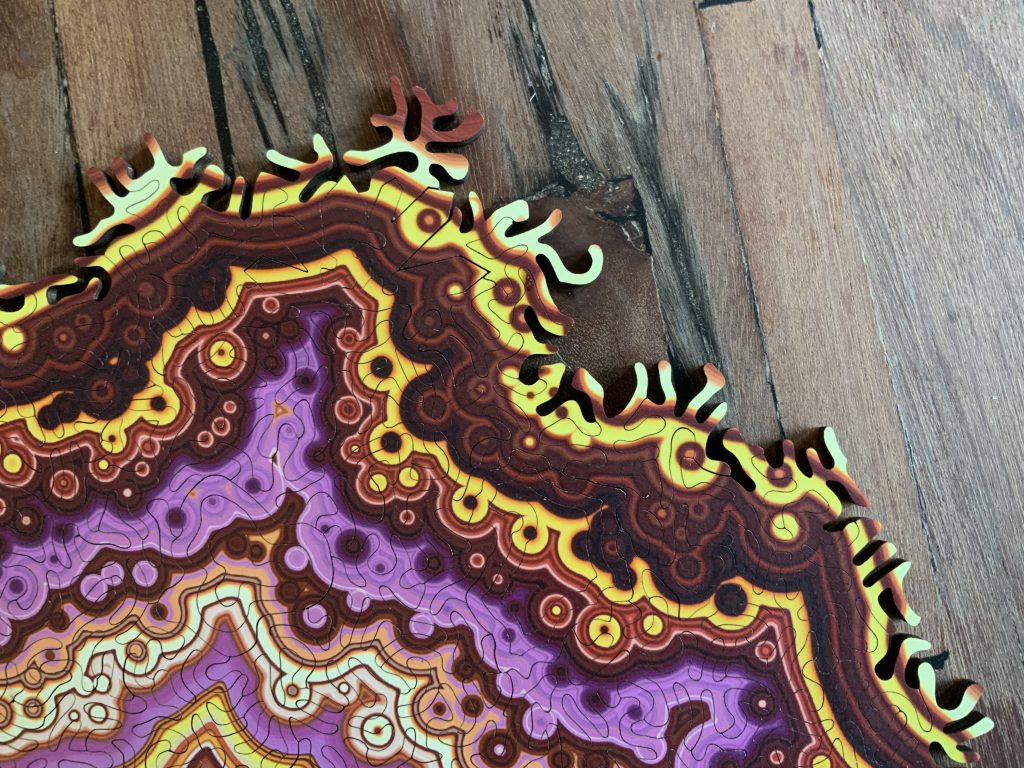We've entered a puzzling time in this pandemic. No, not a strange time - it's been strange for a long time - rather a time that is full of bad puns, me blogging again, and, well, puzzles.
I haven't bought or tried a puzzle in years but my newfound freedom to remain at home indefinitely has led to me explore new pursuits with in the ~~cage~~ bounds of my current four walls. And while I haven't bought a puzzle in years, I have actually been planning a purchase for years. I've been following the work of Nervous System, a design studio in upstate New York that makes biologically-inspired, technologically advanced jewelry, puzzles and more.
Their work is at the intersection of so many things I love (check out the railing they build in their new studio; read their blog). I'd been thinking of getting a piece of jewelry for Wen but she made pretty clear that any new jewelry is wasted this year as no one can go out (thanks 2020!) so I bought a puzzle instead.
One of Nervous System's themes is that everything they do is generated by an algorithm. I bought an agate puzzle that is inspired by geodes; each one is laser cut into pieces by a unique generative algorithm.
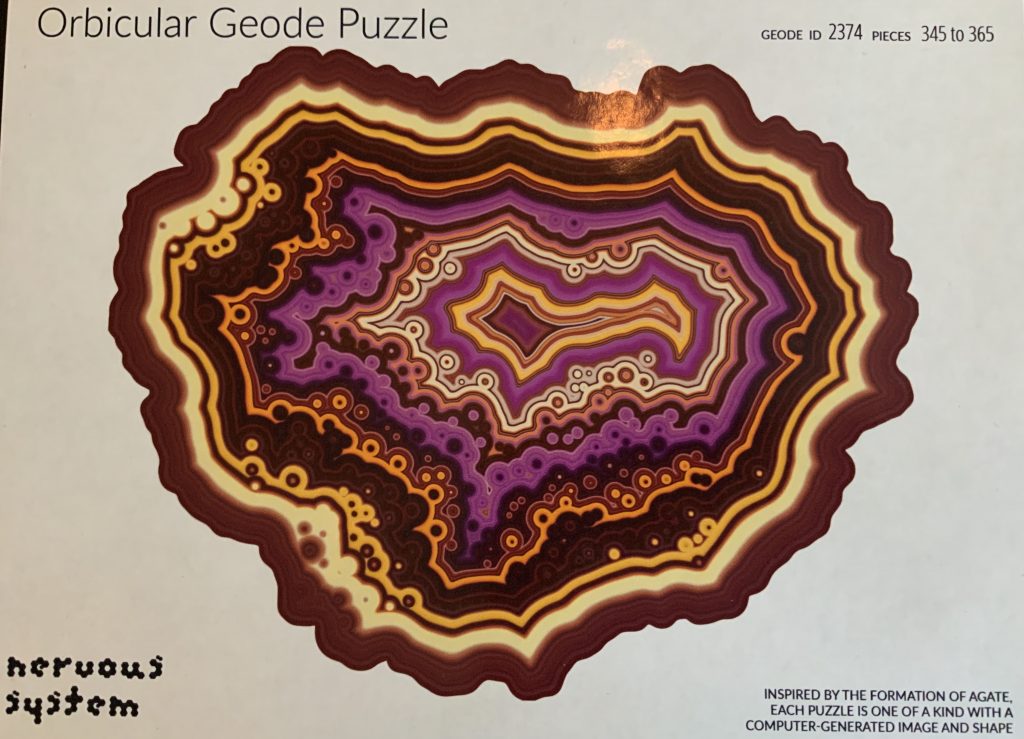
When the pieces arrived and I poured them out, my immediate thought was that I had made a terrible mistake. Unlike a normal puzzle, there are no corners or square pieces. Each piece is some rude organic shape and a smooth gradation in color.
There are patterns but they don't make any sense; my historical frame of reference for how to solve puzzles (Start with the corners! Combine pictures!) was useless.

I could feel my pulse rising as I began to imagine that this puzzle was going to sit unfinished on the table until the dust collected and then it would go join the Instapot and sous vide cooking gear in the "it sounded like a good idea at the time" drawer.
However, after staring at it for quite a while, numerous false starts and some intense peer pressure from my kids, I started to realize that I was going to have to find a new way to do this puzzle. I needed to think like the algorithm that had made it.
The funny thing is that I don't know the algorithm that made this puzzle. Instead, I came up with my own algorithm that could solve the puzzle; never mind if this algorithm could never actually create it.
In the end, I found myself working from the inside out. Spiraling out to see if a piece could fit for a given color gradation. There was an immense sense of satisfaction when they did and disappeared into the puzzle:
In fact, the sense I had of the puzzle was that it was growing, not getting completed. It kept reaching out from the center, extending feelers all amoeba-like, seeking more space:
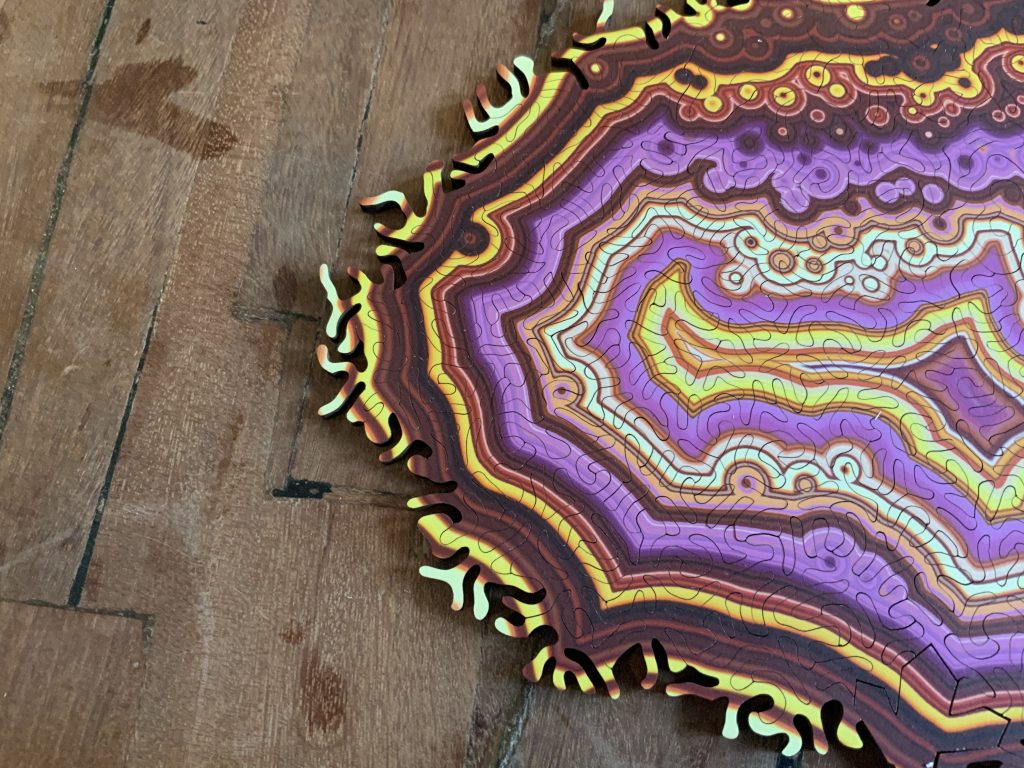
The end result was quite satisfying. I highly recommend trying on of these. Just don't work it like a normal puzzle.
